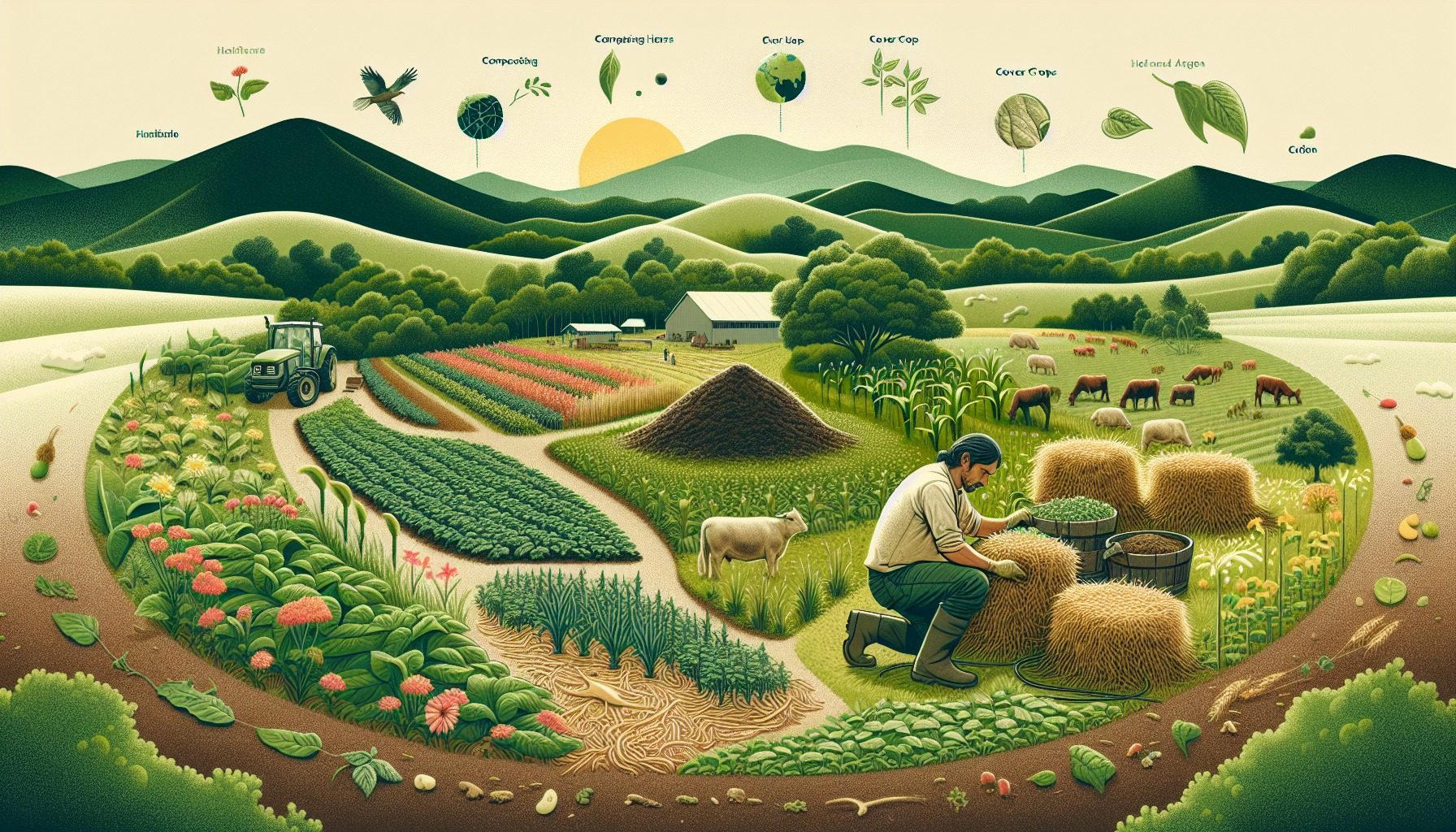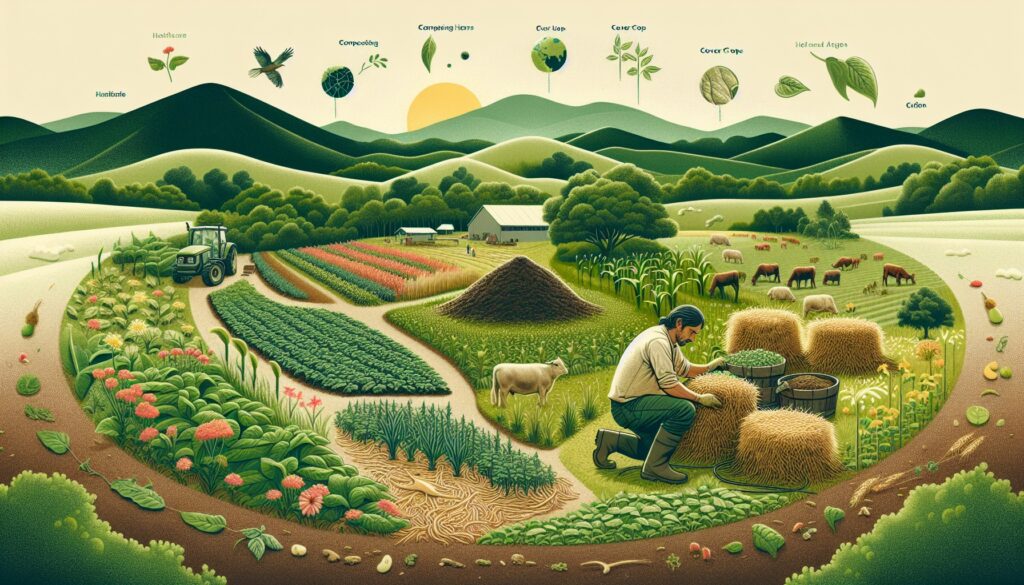Regenerative Agriculture: A Path Toward Healing the Earth
Regenerative agriculture is more than just a farming method; it’s a way of working with nature to restore balance, nurture biodiversity, and regenerate the land. It stands as an alternative to conventional agricultural practices that often deplete the soil, leading to long-term environmental degradation. Instead, regenerative agriculture offers a vision of farming that enriches the land, supports ecosystems, and provides a more sustainable future.
At its core, regenerative agriculture focuses on restoring the health of the soil, a crucial component of our ecosystem. Healthy soil is rich in organic matter, which not only helps plants grow more resiliently but also stores carbon, aids in water retention, and promotes biodiversity. The goal is to rebuild the soil’s organic matter and enhance its capacity to support plant life, while reducing dependence on chemical inputs like synthetic fertilizers and pesticides.

Principles of Regenerative Agriculture
- Diversity of Crops
Unlike monoculture, which involves planting a single crop over vast areas of land, regenerative agriculture encourages biodiversity. Planting a variety of crops helps the soil stay nutrient-rich and attracts a wide range of beneficial organisms, from insects to microorganisms. This diversity strengthens the ecosystem, making it more resilient to pests, diseases, and climate fluctuations. - Cover Cropping
Keeping the soil covered with plants year-round, even when the main crop isn’t growing, is a hallmark of regenerative agriculture. Cover crops, such as legumes or grasses, protect the soil from erosion, retain moisture, and add essential nutrients back into the earth. They also provide habitats for wildlife and help suppress weeds naturally. - Minimal Soil Disturbance
Traditional plowing and tilling can disturb the soil’s natural structure, leading to erosion and the loss of vital nutrients. Regenerative practices minimize soil disturbance, preserving the delicate networks of roots and microorganisms that support plant health. No-till or low-till farming methods keep the soil intact, reducing erosion and improving water retention. - Integration of Livestock
Rotational grazing and incorporating livestock into farming systems is another key practice. Animals, when managed properly, can help fertilize the land, control weeds, and promote the growth of healthy plants. Their natural behavior mimics the cycles of wild grazing animals, which play a role in maintaining balanced ecosystems. - Water Management
Regenerative agriculture aims to improve the water cycle by enhancing the soil’s ability to retain moisture. Practices like mulching, agroforestry, and the use of cover crops reduce the need for irrigation, promote groundwater recharge, and prevent water from running off the surface.
Benefits Beyond the Farm
The beauty of regenerative agriculture is that its benefits extend far beyond the boundaries of a farm. By restoring soil health, this approach can help combat climate change. Healthy soils act as carbon sinks, capturing and storing atmospheric carbon that would otherwise contribute to global warming. Moreover, by promoting biodiversity, regenerative agriculture supports ecosystems that are vital to the health of our planet.
Farmers also benefit from healthier crops, lower input costs, and more resilient systems that can withstand the impacts of extreme weather. For consumers, regenerative agriculture offers food that is grown in harmony with nature, often leading to better nutrition and fewer chemicals in the food supply.
A Gentle Step Toward a Brighter Future
As we face challenges like climate change, biodiversity loss, and soil degradation, regenerative agriculture offers a hopeful path forward. It’s a practice rooted in care for the earth, respect for natural systems, and a commitment to healing the land for future generations. By focusing on regeneration instead of extraction, we can create a more sustainable agricultural system—one that nurtures both the planet and the people who depend on it.
Regenerative agriculture encourages us to slow down and appreciate the intricate connections between soil, plants, animals, and people. It reminds us that the health of the earth is inextricably linked to our own well-being, and that by taking care of the land, we are ultimately taking care of ourselves.



